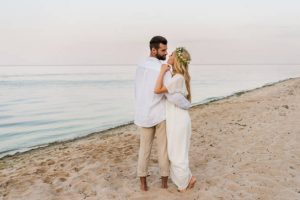In 2017, when my 25-year marriage ended, I did what I do every time I am in a crisis. I turned to the books. I turned to women’s books.
Not all, but many, of these women were in their middle years when they wrote about life after husbands, and often also after intensive mothering. They had arrived in an unknown place. In their lives and in their art, they had no literary or narrative models. They were making up the stories as they went.
After a decade of reading and listening to almost exclusively men for the accounting books that I wrote, my hunger for women’s voices became even more intense.
It was an almost life-saving, impulsive need. My first choice was a classic, Jane Austen’s Persuasion. Austen’s final novel slowly unfolds, exposing her readers to the agony and pain of Anne Elliott as she falls in love with her former suitor. Anne is reserved, gentle and bookish. When she is moved, Anne becomes passionate. She speaks out about women’s emotions and the inequality of opportunities.
No, please do not refer to any examples from books. The men have had the advantage over us when it comes to telling their story. They have had a much greater education; they also hold the pen.
Persuasion was like a tuning-fork that brought me back to my bookish side. Bookishgirl was the self that started a blog in 2010 before both of us – girl and blog – became mired in stories by men. Economics and accounting were both blinded to nature and women.
After Jane Gleeson-White’s marriage broke down, she did what she always does in times of crisis and turned to books. Photo by Pauline Futeran
Read more: Exes, alcohol and loose historical licence: why Netflix’s Persuasion is Jane Austen via Fleabag
Literary motherline
Claiming her literary motherline is one of the impulses behind British writer Joanna Biggs’s new memoir A Life of One’s Own: Nine Women Writers Begin Again. Much as I did, Biggs turned to women writers to answer the many questions thrown up by her divorce – and her book is the result of this reading.
In an interview with Lizzie Simon, Biggs says many people have asked about her decision to write in this hybrid form: part memoir, part biographical essays and part literary criticism.
But Biggs didn’t decide it. The form grew organically from a particular moment in her life, when she was writing for the London Review of Books and experimenting with adding more memoir to her reviews, inspired by the autofiction of writers like Sheila Heti and Ben Lerner.
Biggs looks backwards, partly prompted by books her mother has given her and partly returning to writers she’s loved – Mary Wollstonecraft, George Eliot, Virginia Woolf, Sylvia Plath, Simone de Beauvoir – and reads Zora Neale Hurston and Toni Morrison for the first time.
In her last chapter, she turns to the present, reading Elena Ferrante as her novels storm the world – then rereading the Neapolitan quartet with friends.
Each chapter is devoted to an author, but their lives spill over into each other’s, creating themes that resonate with Biggs’s own experiences:
I watched them try to answer some of the questions I had. This book bears the traces of their struggles as well as my own – and some of the things we all found that help.
Biggs turns to these women not just to find new ways to live, but also to learn new modes of writing and reading. Having studied English and French literature at Oxford University, she’s trained herself out of reading with her emotions and into the “objective” reading of scholarship. Now she’s undoing that by allowing herself to read with her whole self fully engaged – the same way she’s learning to live.
Read more: My favourite fictional character: I’ll never forget these half-wild, ‘too much’ heroines – Philip Pullman’s Lyra and Elena Ferrante’s Lila
Women writers in flux
After reading Persuasion, I realised I wasn’t interested in the past. I wanted to know how and what women were writing now, especially about themselves in flux – at a time when marriage and all the inherited structures of our lives seem as stricken and prone to collapse as the world around us.
I quickly discovered I couldn’t have had a more readily satisfied desire. In terms of my reading life, I was in the best of all possible worlds. I read everything I could find by Elena Ferrante, Maggie Nelson, Sheila Heti and Anne Carson. I read lots of Rachel Cusk, Deborah Levy and Olivia Laing, among so many others.
Unlike Biggs, who in 2020 decided to read a book a week to combat her depression and created what she endearingly calls an “embarrassing spreadsheet” to keep track of it, there was no structure to my reading. But I seemed to be guided to books that spoke to my many challenges as I moved beyond my marriage.
‘I read lots of Rachel Cusk, Deborah Levy and Olivia Laing.’ Pictured: Rachel Cusk. Siemon Scamell Katz
In 2017, soon after my husband moved out and I was ostensibly free, I wrote on a psychologist’s form: I can’t find my voice. I cannot speak.
What is your problem? it asked. I cannot say I, I replied.
Given I was an experienced writer in midlife, it felt bewildering and shameful to have to confess this. The person I’d been had written in a cool, objective voice, which was regularly remarked upon by male correspondents:



